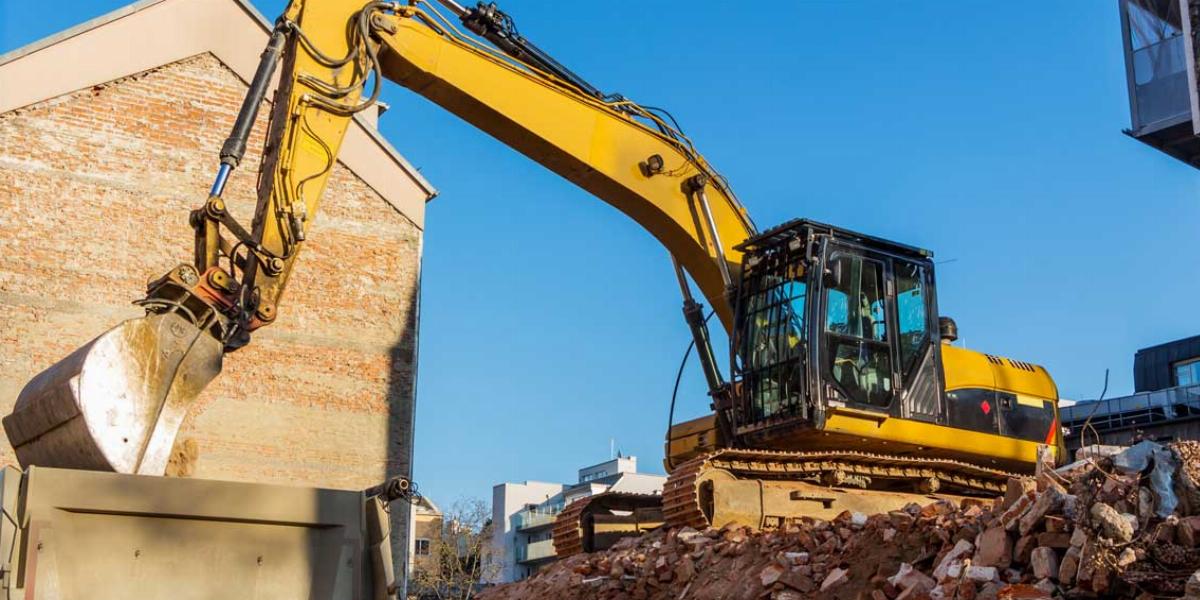
Home deconstruction is a growing movement in the construction industry. Instead of using a wrecking ball and sending the rubble to a landfill, deconstruction recycles building materials and reduces the amount of noise and air pollution that is often caused by tearing down a structure. Some states are even banning disposal of construction and demolition materials in an effort to increase recycling rates and divert materials from landfills.

“Deconstruction is an obvious choice for homeowners and remodeling companies with an eye toward environmental sustainability. The practice is deconstruction also benefits local communities by preventing valuable materials from unnecessarily going to the landfill thereby preserving economic value and conserving land.”
Jeremy Drake | Home ReSource
We talked to Jeremy Drake at Home ReSource to find out what types of structures are the best candidates for deconstruction and which materials can be recycled.
Demolition requires that all utilities be disconnected and shut down before the entire structure is smashed and hauled to the landfill.
Deconstruction is a more involved process in which crews take the home apart piece by piece to salvage as much as possible. This includes everything from doors and cabinets to framing lumber, roofing material and flooring.
While any residential property can have salvageable material, well-maintained homes generally offer the best return on investment. When performing a deconstruction assessment, keep an eye out for bricks, lumber, high-performance appliances or luxury fixtures that usually fetch the highest resale price.
According to Delta Institute, a good candidate for residential deconstruction should have these characteristics:
✔ Built before 1950 or relatively new. Older homes often have building material, including high-quality wood.
✔ No fire or water damage.
✔ Have a level driveway and a sizeable yard to safely house necessary equipment.
✔ No structural issues that present safety concerns.
✔ Clean interior and exterior with no hazardous material present. This can drastically impact the project budget and labor timeline.
Materials That Can Be Saved through Deconstruction for:
| Recycling | Resale |
|
|

“Deconstruction salvages high-value, reusable building components including lumber, trusses, floor joists, doors, door jams, windows…and more. Building materials reused through deconstruction often help make home improvement and building projects more affordable by providing lower-than-average-cost basic building materials to the public.”
Jeremy Drake | Home ReSource
There are plenty of factors that can help you determine if it makes sense to deconstruct a home or not. In addition to whether the house qualifies as an ideal candidate, you also have to consider whether deconstruction works with your project timeline and if your team has the required training to get the job done.
But you don’t have to approach this as an all-or-nothing deal. There is a spectrum of deconstruction options for various situations.
*Source: Delta Institute
Deconstruction offers several environmental, economic and community benefits. It is especially helpful for neighborhoods battling issues with blight, high vacancy rates and unemployment. Not only does deconstruction eliminate blighted buildings and reduce waste, salvage crews also create new job opportunities, since their work requires more labor than demolition. “Deconstruction supports a local circular economy and generates new employment opportunities both directly and indirectly,” explains Drake. “Instead of loading dump trucks full of rubble at the end of a job, a deconstruction crew will sort and band materials on-site for resale or recycling. Those materials then go on to support other jobs in the local reuse and recycling sectors.”
Other environmental benefits include reducing reliance on virgin materials, as new construction can make use of the salvaged items. It also decreases the amount of toxic dust released into the air and heavy metal that leaches into the soil during traditional demolition.
While this process is labor-intensive, the most cases, the benefits outweigh the costs. The resale value of salvaged materials and tax-incentives for recycling and diversion can more than cover the additional spend on deconstruction.
As consumers and municipalities look to hit sustainability and diversion goals, restrictions and regulations in place for building demolition are sure to come down the pipeline. Make sure your crew is ahead of the curve and prepared to meet these requirements by training in deconstruction practices now.
For more advice head over to our resource section, including top apps for construction managers to use on the job site.
